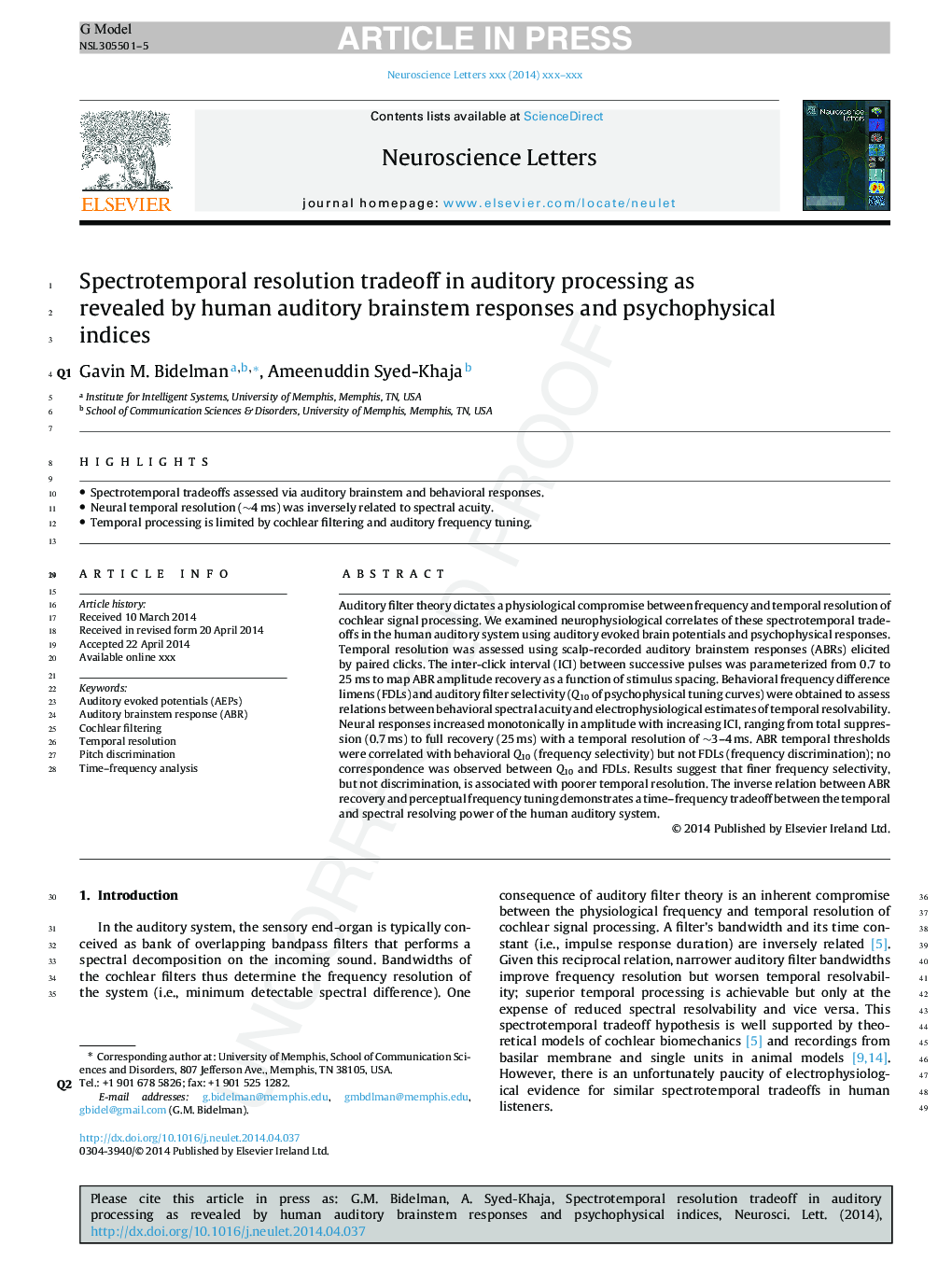| Article ID | Journal | Published Year | Pages | File Type |
|---|---|---|---|---|
| 6281833 | Neuroscience Letters | 2014 | 5 Pages |
Abstract
Auditory filter theory dictates a physiological compromise between frequency and temporal resolution of cochlear signal processing. We examined neurophysiological correlates of these spectrotemporal tradeoffs in the human auditory system using auditory evoked brain potentials and psychophysical responses. Temporal resolution was assessed using scalp-recorded auditory brainstem responses (ABRs) elicited by paired clicks. The inter-click interval (ICI) between successive pulses was parameterized from 0.7 to 25Â ms to map ABR amplitude recovery as a function of stimulus spacing. Behavioral frequency difference limens (FDLs) and auditory filter selectivity (Q10 of psychophysical tuning curves) were obtained to assess relations between behavioral spectral acuity and electrophysiological estimates of temporal resolvability. Neural responses increased monotonically in amplitude with increasing ICI, ranging from total suppression (0.7Â ms) to full recovery (25Â ms) with a temporal resolution of â¼3-4Â ms. ABR temporal thresholds were correlated with behavioral Q10 (frequency selectivity) but not FDLs (frequency discrimination); no correspondence was observed between Q10 and FDLs. Results suggest that finer frequency selectivity, but not discrimination, is associated with poorer temporal resolution. The inverse relation between ABR recovery and perceptual frequency tuning demonstrates a time-frequency tradeoff between the temporal and spectral resolving power of the human auditory system.
Keywords
Related Topics
Life Sciences
Neuroscience
Neuroscience (General)
Authors
Gavin M. Bidelman, Ameenuddin Syed Khaja,
